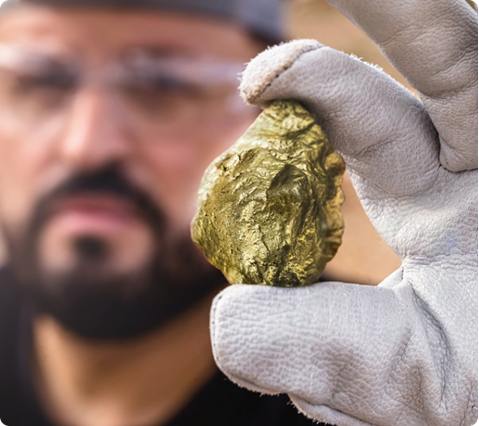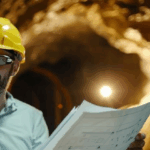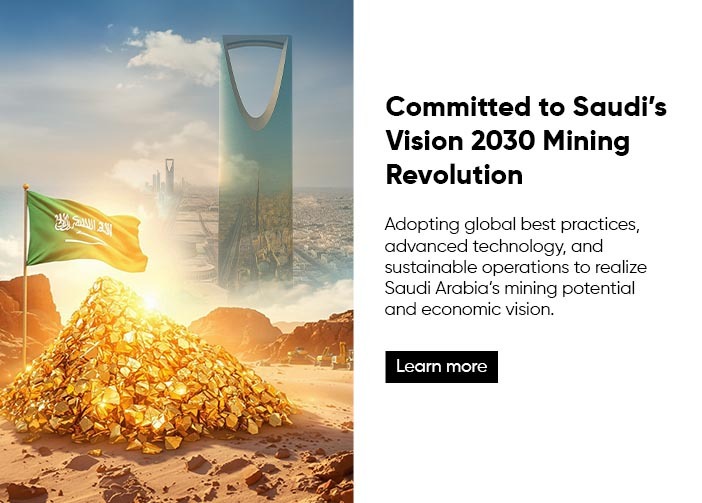
5 Common Challenges in Mineral Resource Exploration (And How They’re Solved)
Ever thought that digging for treasure could be more than just a game? In reality mineral resource exploration is the modern-day hunt for gold, copper and critical minerals. Still this quest does have some bumps along the road, and progress can easily take a backseat at times. These obstacles are unique and require the sharpest of minds and strategic solutions.
As we dive into the most common barriers of mineral resource exploration, we will see how cutting-edge solutions are flipping the script and ensuring success for explorers.
Accessing Remote and Rugged Terrain
Sites that have premium mineral deposits usually occur in hard-to-reach areas. Improper infrastructure, along with rough climatic conditions and uneven terrain, creates resource scarcities in exploration. This makes it very difficult to progress. Companies solve these issues by developing and completing plans to the best of their abilities. Every stage from the transportation of the equipment to the mobilization of the workers is explicitly planned. With proper planning and proper support structures in place to minimize delays, remote areas become easier to access. Exploration activities can also be sustained in the most remote of places with support structures in place.
Ensuring Accuracy in Operations
The foundation of mineral resource exploration in any new land starts with drilling. However, rock hardness, water tables, and subsurface conditions can lead to costly errors if not approached with precision. The answer to this is using drilling programs that are specialized and tailored to the area that is being worked on. The combination of controlled machinery and the prevention of processes that could harm the environment is what makes effective sampling. This approach minimizes wasted resources and provides trustworthy results that can guide the subsequent phases of exploration.
Implementing Effective and Accurate Sample Testing
Determining mineral yield and quality relies on accurate sample analysis. Speaking in much simpler terms, shipping samples to remote laboratories is prone to degradation and time constraints. Furthermore, on-site metallurgical testing alleviates the distance to the testing laboratory, which is secondary to providing accurate and secure analysis.
The Benefits of On-Site Testing Include:
- Immediate access to accurate data for faster decision-making
- Preservation of sample quality without risk of contamination
Developing Processing Facilities Suited to the Ore Type
Miners and contractors face the same problem about unit process operations being the same for all ores. Each mineral deposit has its own characteristics, which need processing in different ways. Constructing processing facilities that are appropriate to the ore type increases the recovery, and therefore is more economical. Creating systems that are in tune with the ore minimizes the tailings and maximizes the recovery of the mineral, while energy and money are spent minimally.
Fulfilment of Environmental and Legal Obligations
Like any other industry, mineral resource exploration comes with its own set of environmental and legal constraints. If untreated waste from storage or tailings systems is stored haphazardly, it may lead to huge regulatory fines and cause havoc to the environment. Such companies address this through environmental management best practices and constructing secure containment systems. Protecting the environment and the continuously evolving legal obligations are, therefore, continuously monitored. Sustainability is the long-term goal, and the environment is safeguarded alongside the project.
Additional Strategies that Support Exploration Success
There is more to this than overcoming the challenges set. An all-inclusive framework contains additional steps to support the other aspects of the workflow to enhance automation and safety.
- Integrated management systems keep all stages aligned from planning to implementation.
- On-site component construction reduces dependence on external suppliers and minimizes delays.
Flexible exploration methods allow faster adaptation to regulatory or geographical changes.
Final Thoughts:
In the end, mineral resource exploration is the culmination of various factors such as discipline, experience, and forecasting. Identifying processes in which drilling, logistics, testing, and environmental regulation actions that could be structurally implemented are separated makes the entire process more reliable.
For organizations seeking to carry out exploration with both precision and responsibility, Aguila Uno Resources provides the expertise and integrated solutions required to meet these challenges with confidence.
Addressing Your Questions:
Where do explorers usually start looking for mineral deposits?
Usually they focus on regions with known deposits. Use aerial magnetic surveys satellite imagery and check for available land without active claims to determine promising sites.
What methods are commonly used in mineral exploration?
The techniques include:
Geophysical surveys
Soil sampling
Core drilling
Rock chip sampling
All of these are aimed at locating and characterizing deposits.
Is regulatory disclosure necessary in mineral exploration reporting?
Yes, standards like Canada’s NI 43 101 and Europe’s PERC ensure accuracy and transparency in resource statements, avoiding misleading claims and fostering investor trust.
Can boosting IT infrastructure improve exploration success?
Indeed ensuring robust processing power reliable access to data and adoption of new technologies improves geological analysis and accelerates discovery.
How are safety risks mitigated during exploration and mining?
Professional analysts help evaluate operations for toxic gas exposure temperature extremes and poor air quality to protect both workers and infrastructure.




